CCT and CCYA shine a spotlight on 13 inspirational young alumni.
Columbia College | Columbia University in the City of New York
CCT and CCYA shine a spotlight on 13 inspirational young alumni.
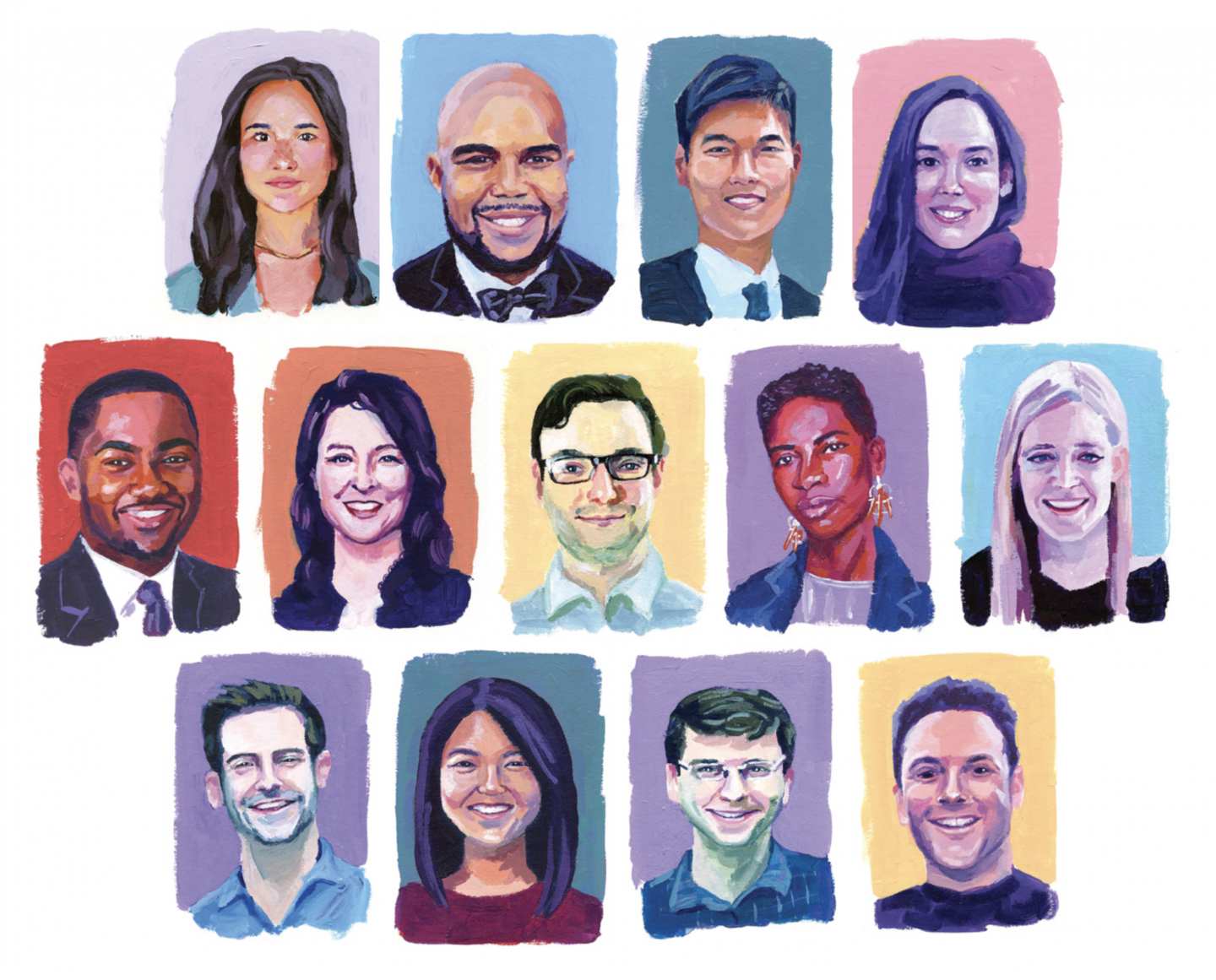
Illustrations by Alyssa Carvara
A YEAR AND A HALF AGO, when we began talking with Columbia College Young Alumni about a partnership to spotlight young alumni, we faced an exciting but daunting challenge. The graduates of the past decade number nearly 11,000, spread across the globe. They have climbed literal and figurative mountains, along with pursuing countless other endeavors worthy of report. How would we even begin?
Then we realized, who better to ask about young alumni than the alumni themselves? In March 2018 we put out a call for nominations for our first Lion’s Pride, and in the months that followed we were thrilled at the number of names we received. We learned about alumni making waves in industries from education to business, from the arts to science and technology. They were leaders, innovators, entrepreneurs. Their work had a meaningful impact on their communities and the wider world. It also had an impact on the peers who submitted their nominations, which in some ways was the greatest tell — these were alumni who uplifted and awed those around them.
The more we read, the more we realized that we wanted this feature to be more than a list, and to go deeper than biography. We wanted to get to know the Lions behind the successes — what drew them to their work, what challenges they overcame, what kept them motivated — and to bring you those stories.
The 13 honorees you’ll meet in the next eight pages are doing very different things, but all are creating lives they feel proud of. They are united by their commitment and passion. And they all have a lot more up their sleeves. We hope you find their stories as inspirational as we do.
— The Editors
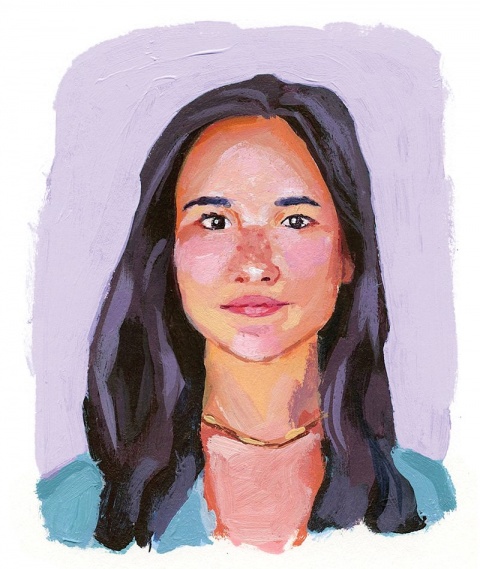
As a senior, Carlyn Dougherty ’18, SEAS’19 signed up for Hacking for Defense (H4D), a class where students tackle actual problems posed by the Department of Defense and U.S. intelligence agencies. The computer science major thought it was “a perfect chance to do a more practical application of the things I’d learned and build something real-world.”
Today, that practical application — an app she and classmates developed for use by the military — is on its way to saving lives. It’s an exciting time for Dougherty, who’s pursuing a master’s in machine learning at Columbia. She also founded a company with her H4D partners (three from GS and two from SIPA) to back their app, CasTaC, short for Casualty Triage and Communication.
Dougherty’s H4D experience began with a broad question: How can communications on the battlefield be improved? After interviewing about 150 people in the military community, she and her team decided they’d work specifically to ease the inefficient information exchange around battlefield injuries.
The current system, Dougherty says, amounts to a chain of medical care where notes about patients are scribbled on a card, then handed off from medics on the ground, to helicopter medivacs, to doctors. “The cards get ripped, get bloody, things aren’t written down at all,” she says. Most of the time, too, these situations occur in areas without preexisting (or secure) satellite infrastructure. Some radios might be available for medical purposes, but messages compete for an operator’s time, and information easily becomes garbled.
CasTaC avoids those drawbacks by piggybacking on something called line of sight communication, where military members are equipped with Android devices that can talk back and forth so long as they’re in view of each other. Medics can use the app to input data once they’re relieved of caring for patients; medivacs in turn can alert doctors to who’s incoming. “Sutures can be prepped, medicine put into syringes — it’s that little bit of time that can help them save lives, ideally,” Dougherty says.
The team has applied for grants and is working with the federal government to move toward field testing. Along the way they’ve presented to Congress and met with veterans. “They’ve seen how issues like this get ignored on a lot of levels,” says Dougherty. “But when you have the kind of intellectual heft we have at Columbia, being able to solve problems that have meaning — or at least make the attempt — is really important.”
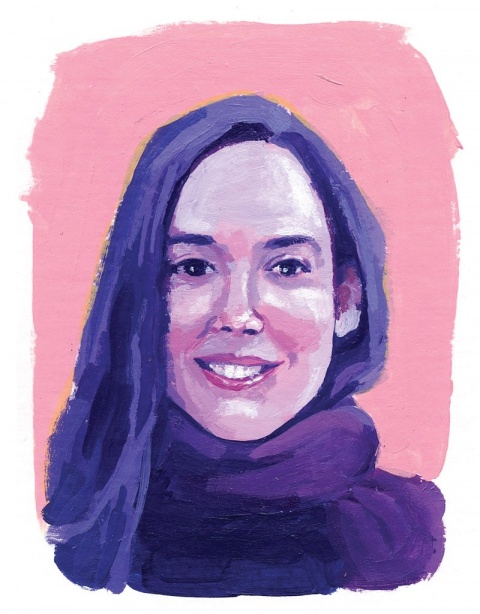
Ayla Bonfiglio ’09 wants to change the stories that students hear in the classroom — about their histories, their wars, their cultures and their people.
That’s the mission at the heart of the Conflict and Education Learning Laboratory, a foundation co-created by Bonfiglio with a global mission: to forge an international agreement to reduce divisive stereotypes in textbooks. CELL focuses more on research than advocacy, and much of its work is gathering the evidence to galvanize change. In this case, by studying dis- criminatory educational content and its impact on prolonging or inciting conflict and violence.
Education is a civic project, says Bonfiglio, “but we also know the saying that history is written by the victors.”Take for example the differences in how Israeli and Palestinian textbooks narrate shared events, or portrayals in the United States of its past with Native Americans. “It’s not always a blatant stereotype or slur against an outsider group,” she says. “It can also be the complete omission of history.”
Persuading leaders that their countries need reforms like this can be sensitive, Bonfiglio adds, “but that’s where having an international focus helps. We’re saying it’s something we all have to do.”
Bonfiglio’s conviction is born of a decade of research into refugee education and forced displacement (she has a master’s from Oxford and is pursuing a Ph.D. at the United Nations University in the Netherlands). Her introduction to the field came as a College student studying abroad in Uganda. Refugees were arriving from the Democratic Republic of Congo, Sudan and Somalia, and she began exploring why those living in urban areas were able to become more self-reliant than those in settlements. The biggest determinant, she concluded, was education: “That’s when I first saw how crucial it was to people living in contexts of crisis.” She soon moved from questions of educational access to the influence of the content itself.
All told, Bonfiglio has interviewed nearly 400 refugees. When people are willing to describe their turbulent pasts, with all the pain that entails, she says, “you really have to ask yourself, ‘Why am I doing this?’ It should hold you more accountable to actually trying to create something that effects change.”
CELL was officially launched during a meeting of UNESCO’s executive board in October 2016 and has since formed partnerships with organizations worldwide. “We are very young,” Bonfiglio says, “but all this support, I think, is testament to the fact that we have an important issue here and one worth fighting for.”
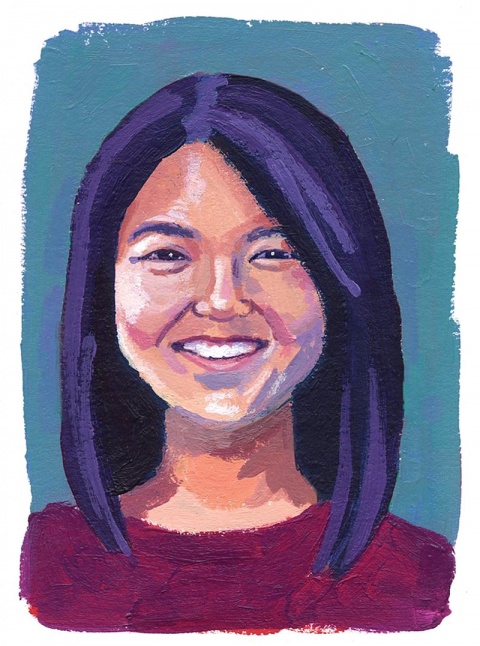
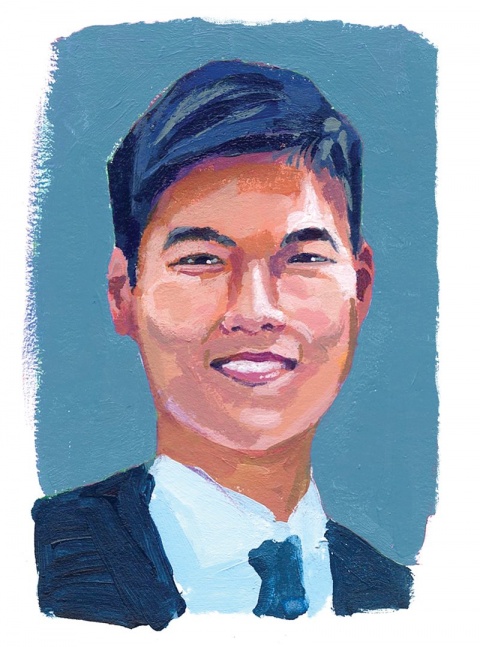
As two-thirds of the biotech company Kinnos, Kevin Tyan ’16 and Katherine Jin ’16 received their first patent for their groundbreaking product Highlight in August.
Highlight is a decontaminant solution created to protect health care workers and patients from infections. As a color additive mixed into disinfectants like bleach, Highlight turns the disinfectant blue and modifies it; when sprayed or wiped, the disinfectant spreads and adheres to waterproof surfaces. The color fades in real time to indicate that decontamination is complete.
The product was born in October 2014 after the pair — along with Jason Kang SEAS’16 — decided to enter Columbia’s Design Challenge, “Confronting the Ebola Crisis.” The charge: to conceive inexpensive, tech-driven solutions to meet the obstacles posed by the epidemic. As biology majors (Jin double-majored with computer science) it was a topic they were all interested in. “The idea was to address a very simple problem — you can’t really see what you’re doing when you’re disinfecting,” Tyan says. “If you can make the process as visceral and obvious as possible, you can make a big impact and protect people on the front lines of these outbreaks.”
Still, the trio didn’t expect Highlight to gain as much traction as it did. In December 2014, they formed Kinnos, and won third place in the Columbia Venture Competition’s Undergraduate Challenge, with a prize of $10,000. Kinnos was also chosen as a winner of the U.S. Agency for International Development’s grant, “Fighting Ebola: A Grand Challenge for Development.”
The team worked on iterations, made research trips to West Africa, studied patents and got up to speed on fundraising while still undergraduates. “One of the most defining features of working in a startup is you basically are in constant crisis mode,” Jin says. “Things change quickly, opportunities arise suddenly and you need to move fast to keep up momentum. You must always be ready to adapt and move forward.”
Tyan, now in his first year at Harvard Medical School, grew up near the National Institutes of Health in Bethesda, Md., and was a crew chief for Columbia’s EMS corps. “I don’t think a lot of people knew how vulnerable the Ebola health care workers were during the crisis,” he says. “These are people who are putting themselves in harm’s way to try to curb the outbreak. A lot of them had been stigmatized for working with Ebola, and they weren’t welcome back in their homes. So it felt really rewarding to create a tool that would make their lives easier.”
While at the College, Jin, originally from Louisiana, served as a campus coordinator for Harlem Hospital Health Leads, which enables health care, community and government organizations to share resources. “Infection prevention is a vitally important part of the health care system, but also one of the most overlooked,” she says. “The repercussions can be catastrophic. By empowering health care workers to clean more effectively, we can reduce the amount of unnecessary and life-threatening infections that affect populations worldwide.”
Kinnos now has patents pending on additional formulas of Highlight and are launching the technology for hospitals and other health care facilities in the United States.
Is it an accident that the Highlight powder is Columbia blue? The team had considered a few other colors, but Tyan notes, “Blue has a calming sense, a connotation of cleanliness. It wound up being the perfect chemical reaction.”
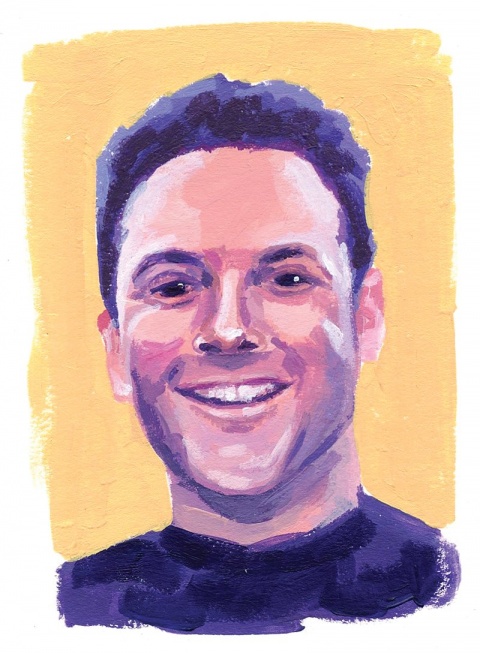
The first thing to know about Adam Sieff ’11 is that he believes in giving back — deeply. The reason he joined his Los Angeles law firm was its commitment to pro bono work, and within weeks of starting he was cold-calling nonprofit civil rights organizations to ask how he could help.
Today, as an attorney with Latham & Watkins, Sieff donates hundreds of hours each year to volunteer cases. He’s currently representing a group of soldiers challenging President Trump’s ban on transgender military service, and has joined with the NAACP to eliminate racial inequities among three school districts in one of North Carolina’s most rural, low-wealth counties. “There is vast inequality in who gets educational opportunities and why, and [working] to make meaningful differences in the kind of adequate education that young people in poor communities are given — that strikes me with a moral urgency,” he says.
Sieff’s sense of civic duty shapes more than his professional life. He regularly volunteers in his community and advocates for causes he believes in; lately that’s included immigration rights and helping L.A.’s homeless. All his work is getting noticed: Last summer he was honored as an emerging civic leader by the Empowerment Congress, an organization dedicated to engaging and supporting Los Angeles County’s Second Supervisorial District.
That kind of hyperlocal impact is one of the most rewarding aspects of Sieff’s work, he says — even more so because he grew up in L.A.’s San Fernando Valley. His ideas about service took root as a result of both his faith and family upbringing: “In Judaism, we talk about how the world is broken and even though we know we can’t put it all back together again, we strive to do just that anyway.” Columbia furthered his understanding of what it would mean for him to live a meaningful life. “Ultimately what I drew was that I wanted to make a difference in the community I came from. It held a purpose for me.”
Sieff readily admits to the frustrations of slow-moving government and legal systems. But he tries to stay inspired. “When you’re at trial there’s a saying: ‘A brick is not a wall.’ But all you need is brick by brick, get the evidence down — it’s the same concept,” he says. “You have faith in the belief that if you string together enough little wins, you’ll get somewhere.”
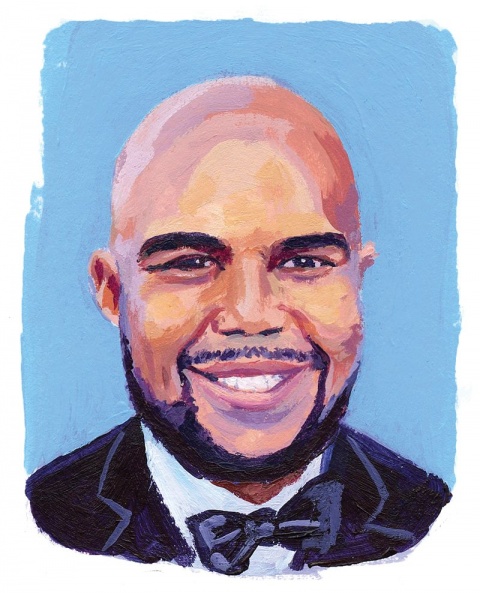
ESPN producer Steve Martinez ’11 is living his dream. It took a lot of hard work — and he’s not stopping yet — but for now, as one of the hands behind the basketball show The Jump, it’s the dream. “I picture myself being a kid at home who would watch it,” he says, sounding not unlike a delighted kid himself. “If I was a teenager at this time I’d be rushing home every day to watch this show I get to make.”
Martinez basically was that teenager. He grew up a superfan in Washington Heights — the Knicks’ 1994 title run was a seminal childhood experience — and was a TV anchor and sports reporter for his high school. He majored in film studies, then beelined for ESPN after graduation. After four years as a researcher, his basketball expertise earned him an invitation to join a small team developing a new show. The Jump, launched in 2016, was so successful it was quickly promoted from a 30-minute seasonal series on ESPN2 to a daily, year-round program on the network’s main channel. By the end of 2017, Sports Illustrated was calling it the smartest basketball show on television.
What sets The Jump apart, Martinez says, is the team’s understanding of tone and ability to shift between topics. “We’re serious when we need to be — we can cover sexual assault allegations against the CEO of a team — but we can also handle the humorous stories of the game.” And while life on deadline is stressful, as is working in live television, Martinez isn’t complaining. As he sees it, his job is to put a plan in place that works, but also be able to deal with the inevitable misfire: “If your knowledge of your subject is strong enough then it shouldn’t be an issue.”
Martinez — who kept the press credentials from the first game he covered at Madison Square Garden, as a reminder of how far he’s come — says one of his focuses is inclusive content that embraces diversity. He cites a Hispanic Heritage Month segment that covered how basketball has taken off in Guatemala thanks to expat college students who bring it home with them. “We showed middle-aged Guatemalan women playing full-court basketball; it’s incredible,” he says. “That’s part of the reason I love sports — how it connects and unites people. That’s what I try to do in a small way every day: bring people together, make them happy about something that they enjoy.”
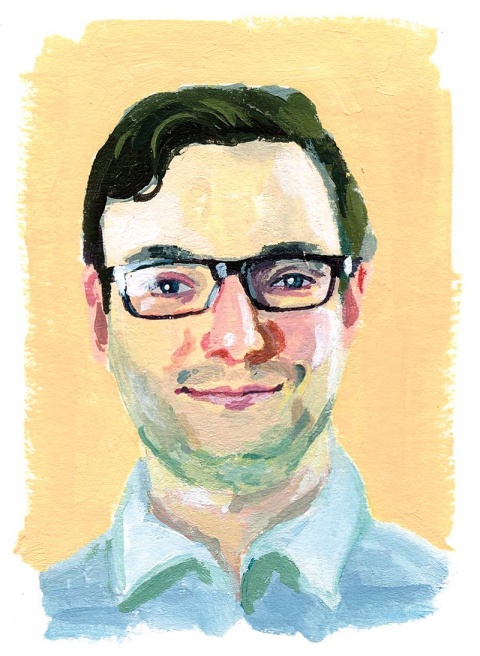
As an undergraduate, Gavin Newton-Tanzer ’12 co-founded a nonprofit, Global China Connection, to foster exchange opportunities between U.S. and Chinese university students.
Fair warning: This is not that story (though GCC has since grown to thousands of members worldwide). But from that experience came Newton-Tanzer’s next act, Sunrise International Education, which since 2012 has flourished at what was once an unlikely enterprise — bringing extracurricular activities to Chinese students.
As Newton-Tanzer explains, through his work with GCC, he began noticing a trend. Families would ask him about his path to college, and his honest assessment — he wasn’t good at standardized tests, but was a jazz pianist and heavily invested in clubs and especially debate — brought “blank stares.” “Extracurriculars were not a thing,” he adds. “Kids would literally be in school until 6 or 7 p.m., and then they had late-night study.”
At the time, he says, wealthy Chinese families were beginning to look more seriously at having their children educated in the United States. But that meant adapting to an admissions process that was rounded in its considerations — a sharp difference from China’s notoriously tough universal entrance exam.
Newton-Tanzer saw an opportunity. Focusing on debate as a way to engage and help students think outside academics, he and a business partner began setting up tournaments around the country, offering to train students for free if they participated. From seven tournaments that first year, Sunrise today runs more than 50 annually; its offerings have also expanded to include extracurriculars ranging from robotics to arts programs. All of the programs are grounded in the idea of nurturing communities of like-minded students and giving them a platform to demonstrate their knowledge.
Newton-Tanzer and his partner are no longer on the front lines of travel and teaching; their Beijing team numbers just under 100, and they’ve dedicated themselves to pushing into new arenas. One example: Sunrise is helping non-Chinese universities communicate with prospective students and families (hosting websites, running social media); it’s their solution to China’s “great firewall,” which blocks access to select foreign websites.
Why China? Newton-Tanzer credits his high school language tutor, a U.N. interpreter, with opening his eyes to the opportunities that come from “being able to facilitate dialogue and communication between two great powers.”
At 18, Newton-Tanzer boarded a plane for a gap year in Beijing: “I was completely unprepared,” he says with a laugh. But he was clearly on his way.
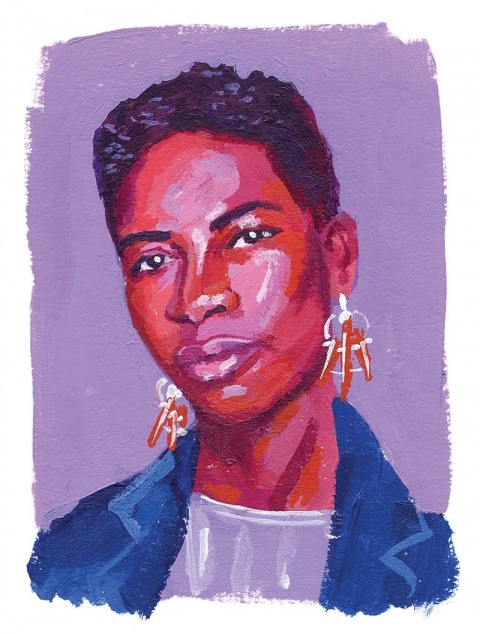
Sabaah Folayan ’13 may not have planned to be a documentary filmmaker, but she’s already making a splash. Her directorial debut, Whose Streets?, premiered at the 2017 Sundance Film Festival and was acquired by Magnolia Pictures; the film chronicles the August 2014 protests in Ferguson, Mo., sparked by the shooting death
of Michael Brown Jr.
Folayan, born and raised in Los Angeles, thought she would be a physician. After getting her degree in biology, she started the applications for medical school but found the process dehumanizing. So she moved toward public policy and became a strategic planner at the Osborne Association, which helps formerly incarcerated people put their lives back together. Always a writer, she realized she had a knack for interviewing. “I also realized how powerful and cathartic these conversations could be,” she says.
Folayan knew there were stories to be told from the protests in Ferguson, so she and a College friend, cinematographer Lucas Alvarado-Farrar ’13, traveled there to do interviews for a report on the public health implications. “With the police and protestors facing off like they were, it was going to cause PTSD in the community,” she says.
Arriving at the chaotic scene, Folayan quickly realized it was not the time or place for multiple-choice questions about mood, appetite and sleeping habits. “We started doing interviews on camera and it quickly became obvious that we had to keep documenting this,” she says. “Then it became a matter of learning on the spot how to make a documentary.”
With no funding at all the first year, making the film was a challenge. “I was paying out of pocket, sleeping on couches, taking small jobs here and there — ruining my résumé in order to keep doing this,” she says. Folayan and her team got their first grant in August 2015, then raised a quarter-million dollars at a documentary funding event that October.
Despite the obstacles, Folayan — who received a “30 Under 30” nod from Forbes last year — is now on the right path; her next project is about the Equal Rights Amendment. “When you can make a film that’s very emotionally driven, it gives people the opportunity to see themselves reflected,” she says. “For people of color, Whose Streets? was a chance to reflect the dignity that’s in struggle and in protest. I’m motivated by trying to give a voice to people who are not usually heard.”
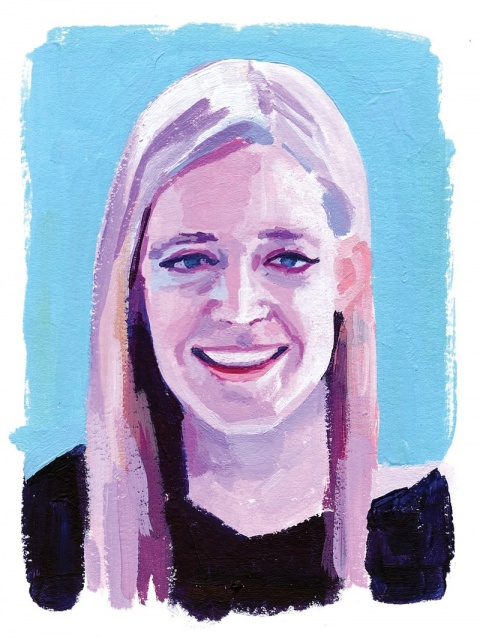
Kendall Tucker ’14 is ready for real conversation, and she’s betting the rest of America is, too.
That’s the premise behind Tucker’s data tech company, Polis, which is collecting information about people the old-fashioned way: by knocking on doors.
“The pendulum has swung heavily toward digital and digital outreach,” says the Boston-based CEO. “And I believe it’s swinging back pretty heavily to seeing people as people, putting down devices and having conversations in person.
“Unlike groups that are stealing data,” Tucker adds, she believes in an up-front approach and in-depth interviewing. “People can tell us, ‘Hey, these are the groups I want to come talk to me, and these are some groups I don’t.’ And by knowing what people actually care about, we can contact them in respectful, impactful ways.”
Where Polis gives pavement pounding an innovative twist is in its app, which essentially turns the data it gathers into interactive neighborhood maps for businesses and political campaigns. Users are given ideal routes, with dots for every home where Polis has been;
click, and they get demographic info and learn about the issues that matter to residents and whether they’re likely to be receptive to the service — or idea — being pitched. It even offers scripts based on what’s likely to make the interaction more effective.
Tucker, who majored in political science, founded Polis in 2015 purely as a tool for political canvassing. (The idea stemmed from her own frustrations as someone who had volunteered for campaigns and found the door-to-door approach to be both ineffective and inefficient.) By the end of 2016, the app had been picked up by roughly 150 campaigns, notably that of Libertarian presidential candidate Gary Johnson. Its success earned attention from Forbes to The Washington Post and Today, and soon for-profit businesses began calling. At the time, Polis wasn’t designed for them, but Tucker and her team decided to take on the challenge. Today, much of the company’s business comes from energy, telecommunications and security companies.
All told, the Polis team has knocked on 10 million doors. Their goal is to speak to all 300 million Americans in the next five years. It’s ambitious, but that’s what excites Tucker. “We have a vision of the world functioning in a different way, and a team that’s incredibly committed to the mission. It’s been a really exciting journey.”
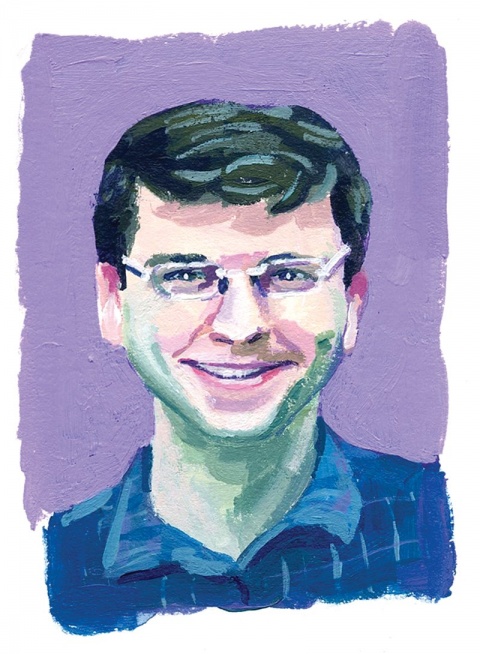
Thomas Kapusta ’12
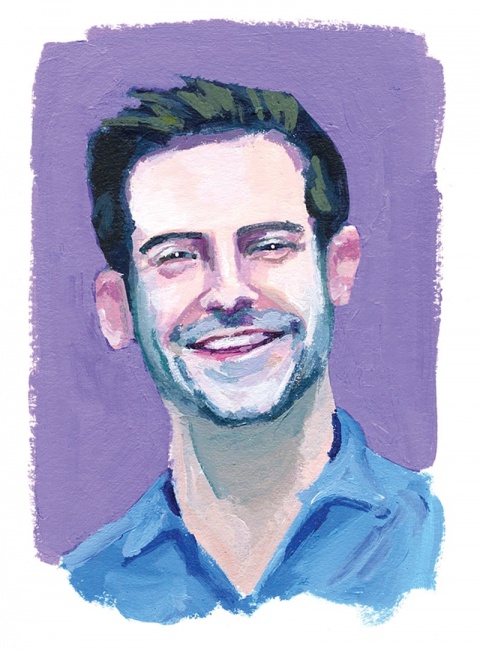
Alexander Donnelly ’14
Like several other Lion’s Pride honorees, Thomas Kapusta ’12 and Alexander Donnelly ’14 created something new by asking themselves an ambitious question: “Hey, why don’t we … ?” In this case, their vision was to launch an independent theater forum that values artistic collaboration over commercial success. Now in its third year, The Corkscrew Theater Festival presents new work by early-career artists during four weeks at the Paradise Factory Theater in the East Village.
Kapusta and Donnelly founded Corkscrew in 2017, taking advantage of the opportunity created when the popular New York International Fringe Festival went on hiatus for a year. “We realized the time was now to fix the festival process and make it more artist centric,” Donnelly says. “There are a lot of people who can’t raise the money to put on a show at Fringe and we didn’t want that to be a hinderance to genuinely good art that was out there.”
The two met at The Brewing Department, a theater company Kapusta founded with four other College alumni in 2013. The group operated for four years, producing the work of its collective members. Kapusta was a director, and Donnelly, who worked on Wall Street, did fundraising and producing.
After the other Brewing Department founders split off to pursue graduate school, Kapusta says, “I was left with a moment of ‘What would happen if I turned the collaborative mission outward and solicited submissions from the community beyond this group?’ That’s when Alex and I first started talking about this, and we just sort of started dreaming about what we could make.”
They wanted to create a forum that was small enough to be hands on but big enough to provide meaningful exposure for rising artists. They decided on a name (“‘Corkscrew’ represents turning potential energy into kinetic energy”), put together an application and began doing outreach for submissions. “We hoped we’d get five — we ended up getting around 70 submissions our first year,” Kapusta says. In their second year they had three times that amount.
“We go out of our way to find people who are working in robust collaborative models,” Kapusta says. “If you start with that premise — that we can do more together than we can do apart — people really live up to that challenge.”
Donnelly and Kapusta both have had theatrical leanings since childhood. Kapusta performed in plays at school in Wappingers Falls, N.Y., and at the College realized this was the work he wanted to do. For Donnelly, who grew up in New City, N.Y., theater was his reward for getting good grades. He worked on shows in high school, and though he majored in financial economics at the College, acted in musicals and performed in the Varsity Show.
Their collective experiences shaped the vision of the warm, collaborative space they wanted to create, and the two are thrilled by what they’ve already achieved. And now that Fringe is back on, they’re not worried. “[Fringe will] still be very good at what they do, which is producing a massive festival,” Donnelly says. “We want to be more curated. Corkscrew is a true incubator — we’re the place where artists can come to genuinely feel supported for their work.”
“I get a lot of joy from encouraging artists to see their vision into reality, and from working together to achieve a collective perspective on the world,” Kapusta says. “In King Lear, Lear says, ‘Nothing comes from nothing,’ but with theater, something comes from nothing — it’s magic. We can do that.”
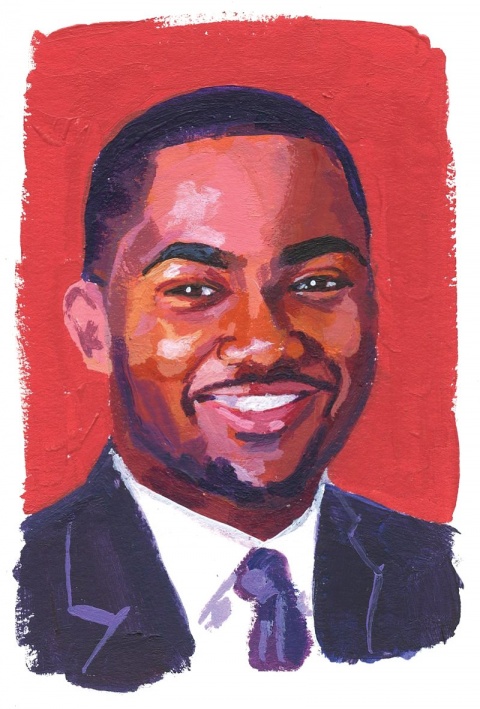
Riley Jones ’17 understands that the right intervention at the right time can change a person’s life. He came to Columbia from Chicago’s South Side via a Questbridge scholarship for low-income students; while still an undergrad, Jones became the CEO for BLOC, a coaching company that empowers young people of color to build fulfilling careers.
In 2014, when Jones was a sophomore, he learned through the College’s Black Students Organization about a career and identity conference being held at Princeton. “The conference was amazing,” he says. “I told the woman who organized it I wanted to help plan the next one. She asked me to join its new team.”
Jones quickly became a leader, and the first BLOC conference was held in November 2015 in New York City. More than 500 students from across the country attended. “We called it ‘Uprising’ — our goal was to give students a platform to have the conversation about diversity in the workplace,” he says. The conference focused on tech jobs but also included panels on academia, medicine, business and law.
After Uprising’s success, the BLOC team was ready for more, and they had their work cut out for them. “There are statistics about how hard it is to get venture capital for POC and WOC founders,” he says. “It’s a challenge getting in front of people who want to support what we’re doing. We had to think out of the box.” Jones took advantage of the fact that he was a student to start conversations with potential donors: “Many people find students non-threatening and non-intrusive,” he says. “And people take me more seriously now that I’m in law school.”
Jones is studying social entrepreneurship at NYU Law — the idea that you can do well financially and do good for the world at the same time. “You can have social impact built into your business model,” he says.
Three years later, BLOC is thriving — and getting noticed; Forbes added Jones and his co-founder, Amina Yamusah, to its 2019 “30 Under 30” Social Entrepreneurs list in November. The company is now considering how to improve job prospects for other marginalized people, such as the formerly incarcerated, or young people who grew up in the foster care system. “There are people who have to hold these identities and navigate the workplace,” Jones says. “We’re focused on how to use data to empower them rather than displace them.”

Ana Helena de Oliveira Lobo ’15 is (literally!) expanding universes for young women. Lobo, a Ph.D. candidate in planetary atmospheres at CalTech, is the founder of the WLF Program, which provides free STEM education to girls in developing countries and prepares them for careers in the sciences.
Launched in July 2018, WLF had more than 50 teenage girls sign up for its first program in Londrina, Brazil. During the course of a week, Lobo taught the attendees an intensive calculus course, with computer science, astronomy and planetary science lectures included. At the end, the students were tested; the majority scored a B or above. “Their performance way exceeded my expectations for what we could accomplish in a week,” Lobo says.
Lobo was inspired to develop WLF after experiencing sexism in her own education. As a high school student in Brazil, there was little encouragement for women to study science — there were no female science teachers in any field, and male teachers could be condescending. “They referred to boys as ‘talented’ and girls as ‘hard workers,’” she says. Lobo received lessons in math and physics from her mother, a researcher, and majored in astronomy and earth sciences at the College.
“I’d had the idea before I left Columbia that I would eventually do something to support other young women,” she says. “Watching the political climate here and in Brazil, it seemed like it couldn’t wait. As a graduate student I now have the skills necessary to teach, and I was prepared to give back — that was reason enough to get started.” Lobo wanted to serve in communities outside major cities, where she felt STEM opportunities were really lacking. “The lack of role models is a big deal,” Lobo says. “In the U.S., while there are still a lot of challenges for women in science, we’re very active about talking about it. The reality is that here [in Brazil], a lot of these girls don’t know that these fields exist.”
Lobo is also experimenting with mentorship and empowering techniques that will boost girls’ confidence as well as their skills. WLF is moving forward with a second course series, expanded to two weeks, scheduled for this July.

Published three times a year by Columbia College for alumni, students, faculty, parents and friends.
Columbia Alumni Center
622 W. 113th St., MC 4530, 6th Fl.
New York, NY 10025
212-851-7852
cct@columbia.edu

Columbia Alumni Center
622 W. 113th St., MC 4530, 4th Fl.
New York, NY 10025
212-851-7488
ccalumni@columbia.edu